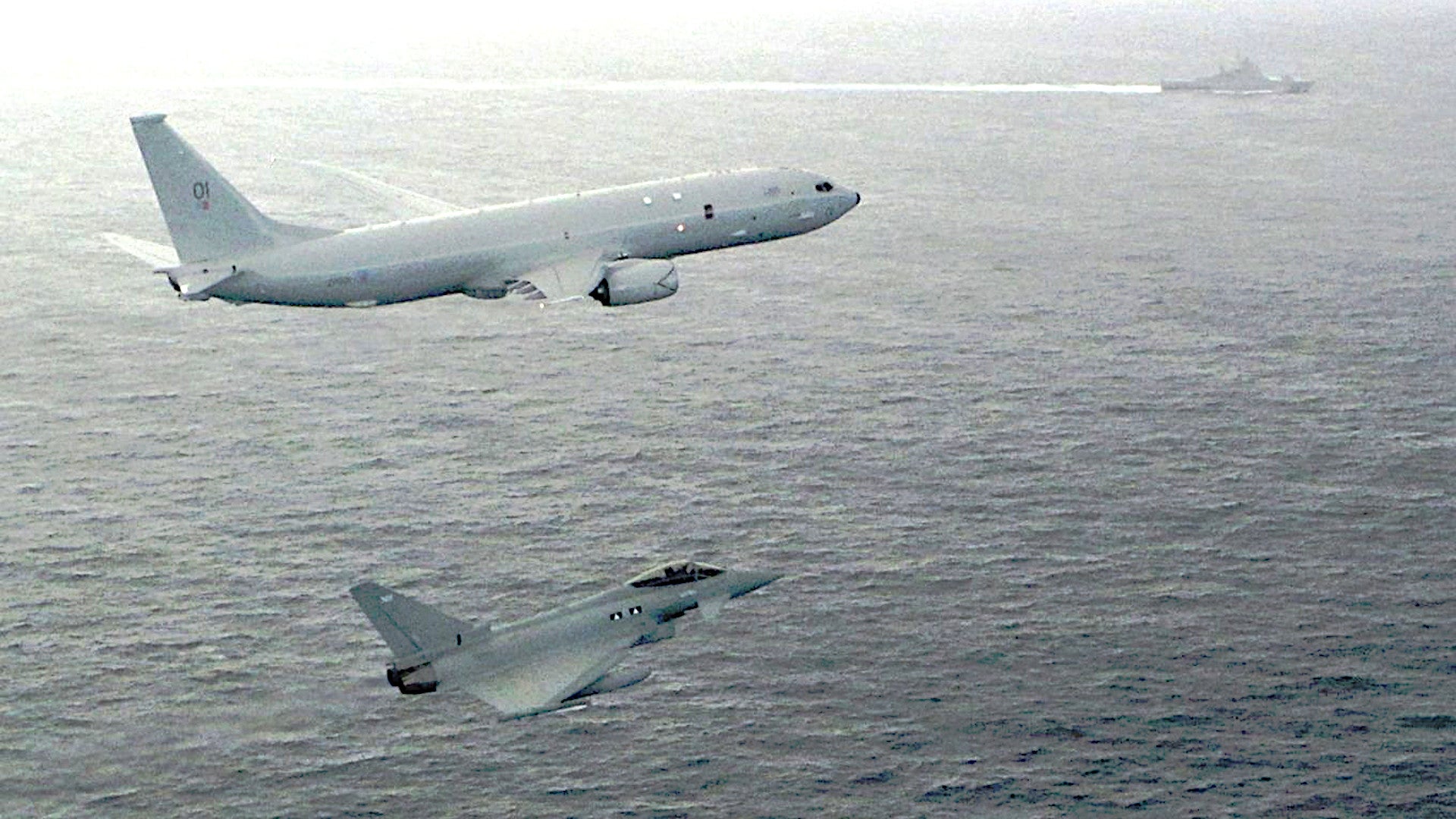A Royal Air Force P-8A Poseidon maritime patrol plane conducted its first operational sortie earlier this week. The aircraft flew together with Typhoon fighter jets to shadow the Russia Navy’s missile-armed Project 22160 patrol ship
Vasily Bykov as it sailed in the North Sea to the northwest of the United Kingdom.
The mission occurred on Aug. 3, 2020, but was only publicly announced on Aug. 7. The P-8A in question was assigned to the Royal Air Force’s (RAF) No. 120 Squadron, the service’s lone Poseidon unit, which is presently operating out of the British Army’s Kinloss Barracks, a former RAF base in Scotland, while runway work is being done at their home base of RAF Lossiemouth. The RAF presently has two P-8As, also known by the British designation Poseidon MRA1, and another seven on order.
“In an increasingly unstable world of persistent challenge and competition, it is important that the U.K. Armed Forces possess cutting edge technology to meet threats wherever they emerge,” Annabel Goldie, the U.K. Minister of State for Defense, said in a statement. ‘The sight of our new Poseidon aircraft, working in concert with the Royal Navy has showcased the UK’s readiness to defend its waters from any incursion.”
“The RAF continues to evolve and develop as the Next Generation RAF becomes a reality. The Poseidon aircraft is a key part of that development and evidence of the hard work performed by all those involved,” RAF Air Vice Marshal Ian Duguid, head of No. 11 Group, added. “This mission by the Poseidon, to monitor Russian naval activity, shows how the RAF will now be able to contribute to Maritime Security alongside the Royal Navy and our NATO allies, to secure the seas and skies.”




Between 2010 and 2011, the RAF retired all of its Hawker Siddeley Nimrods, including maritime patrol and intelligence gathering variants, without a direct replacement as part of budget cuts following a regular Strategic Defence and Security Review by the country’s Ministry of Defense. This also resulted in the retirement of the iconic Harrier Jump Jet from both RAF and Royal Navy service, something you can read about more in this recent War Zone feature.

Since then, RAF Typhoons have been regularly employed to monitor foreign naval activity near the United Kingdom, as well as potential threats to the country’s airspace. The limitations of these aircraft in this role were clearly visible during this mission as they had break off to refuel, linking with RAF’s VIP-configured Voyager aircraft, which can still perform its duties as tanker-transport. Voyager is the RAF’s designation for the Airbus A330 Multi-Role Tanker Transport (MRTT). You can read more about this particular aircraft, seen below during the operation over the North Sea earlier this week, which was the source of some controversy recently over its new, high-visibility paint job, in this War Zone piece.

The introduction of the Poseidons, which the U.K. Ministry of Defense first ordered in 2016, means that once again the RAF has a more robust, dedicated maritime patrol capability. These aircraft can provide far more persistent surveillance then fast-moving, fuel-hungry fighters.
The P-8A is also an anti-submarine warfare platform. The start of RAF Poseidon operations comes at a time when many of its fellow NATO members, especially the United States, have been warning about the potential dangers posed by a notable increase in Russian submarine activity in the Atlantic Ocean and Arctic region in recent years.
Last month, NATO concluded its latest iteration of Exercise Dynamic Mongoose, an annual anti-submarine warfare drill in the North Atlantic. The U.K. armed forces participated, but the RAF did not send any P-8As. Two U.S. Navy Poseidons did take part in the exercise.
In addition, the P-8A has significant intelligence, surveillance, and reconnaissance (ISR) capabilities that the RAF will now be able to take advantage of operationally. It’s very possible, if not probable, that the service will be able to leverage at least some of the work the U.S. Navy is now doing to expand the aircraft’s arsenal, presently limited to air-dropped torpedoes and AGM-84 Harpoon anti-ship missiles, and other capabilities.
Regardless, the P-8A already provides the RAF with a hugely capable maritime patrol and anti-submarine warfare asset and is allowing the service to return to performing these mission sets regularly with a dedicated platform nearly a decade after the retirement of the Nimrods.

Contact the author: joe@thedrive.com
